

Here are some previously unpublished photos of the Renault X-05. This programme, also known as IRIS, began in mid-1986 and was completed in 1989. As the head of the X05 project – Claude Sutren – explains in an article published in the February 2015 issue of ‘Renault Histoire’ no. 32, ‘‘X05 is not a prototype intended to be mass-produced as such, but a rigorous approach to what could be, on the one hand, standardised and modular products and, on the other, an industrial and social plan (the Iris factory) that would enable Renault to compete with the most productive of its competitors.’’
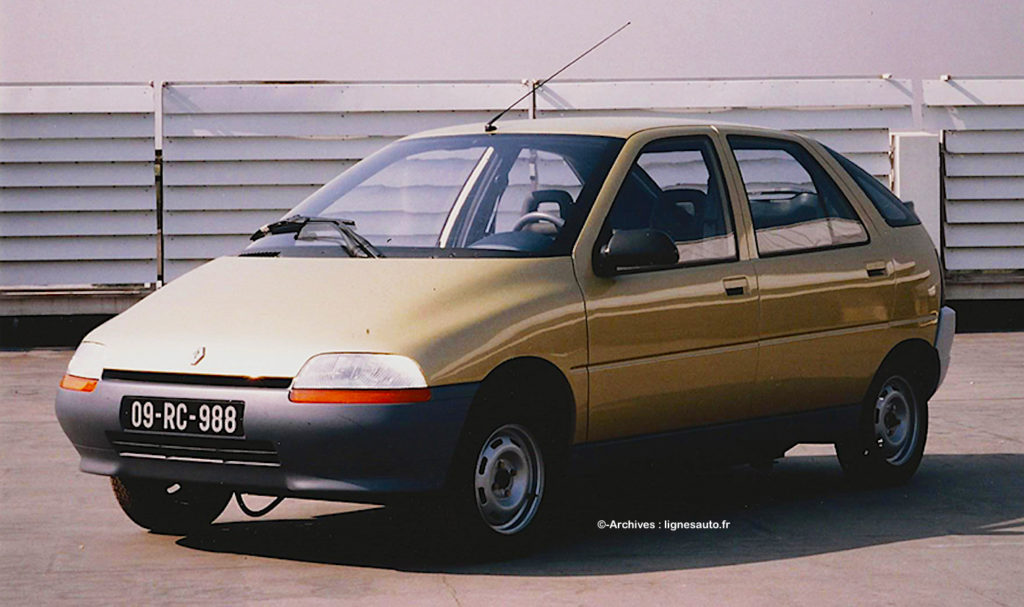
And when this Arts et Métiers engineer refers to the competition, he is primarily referring to Japanese methods. The idea of ‘Toyotism’, which was born in the 1960s, became an integral part of Japanese production in the 1970s. It took Europe 20 years to adopt this just-in-time production method. But that’s another story! In 1985, Georges Besse, the head of Régie Renault, was wondering about this project. Claude Sutren recounts a fax from the time in which the X05 programme teams replied to the chairman ‘‘that it was a small car project and that it was not considered a product programme’.’
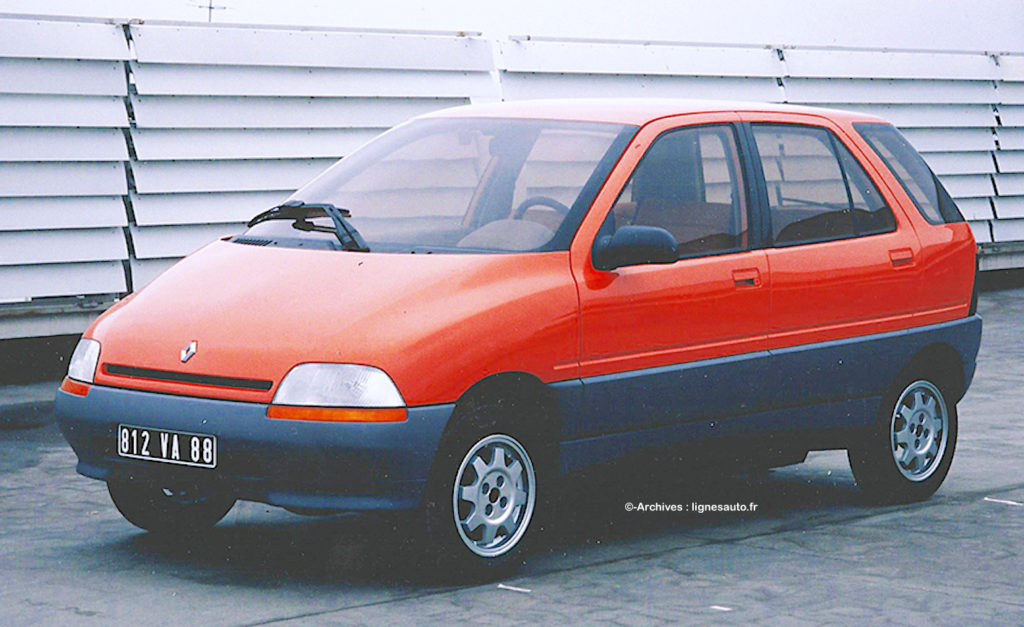
In mid-1986, the multi-disciplinary team set up by Claude Sutren moved to rue du Port in Nanterre, where it included the ‘advanced’ design team, headed by Jean-François Venet, and Jean-Paul Manceau, who worked on non-automotive products such as lorries. However, it was not from Venet’s team that styling boss Gaston Juchet sought the designer for the X-05 project, but from the team based in Rueil and headed by Michel Jardin. On this project, there would be just one lead designer, Grégory Gambarara, assisted by a group of engineers headed by Jean-Claude Imbert, including Henri Gallès, Michel Monteil, Claude Urset and Jean Michel Demaldent – quite a team.
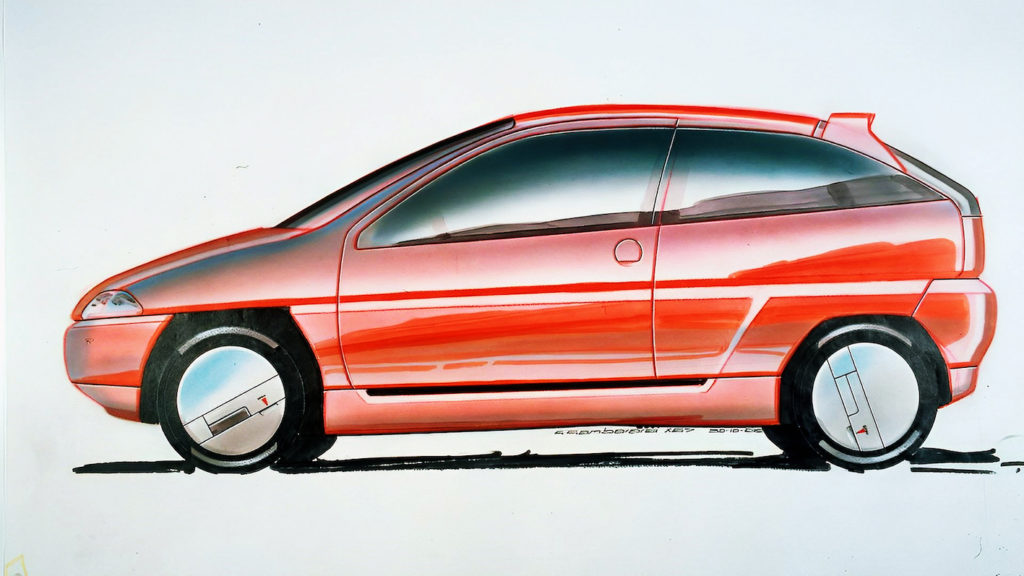
Grégory Gambarara joined Renault styling in Jean-François Venet’s advanced design studio in March 1985. He was transferred to Michel Jardin’s studio three months later. “At the time, I was working on some fairly distinctive designs, such as the Supercinq Turbo with Guy Greffier, who won the project. Then there was the Vesta 2 prototype and the X57 programme to renew the Supercinq, which was to become the Clio in 1990. Later I would work on a rally version of the Renault 19 with Berex and Gilles Lallement. A Group B, for rallying, with four-wheel drive, which in the end never saw the light of day.” Formula 1 remained the priority!
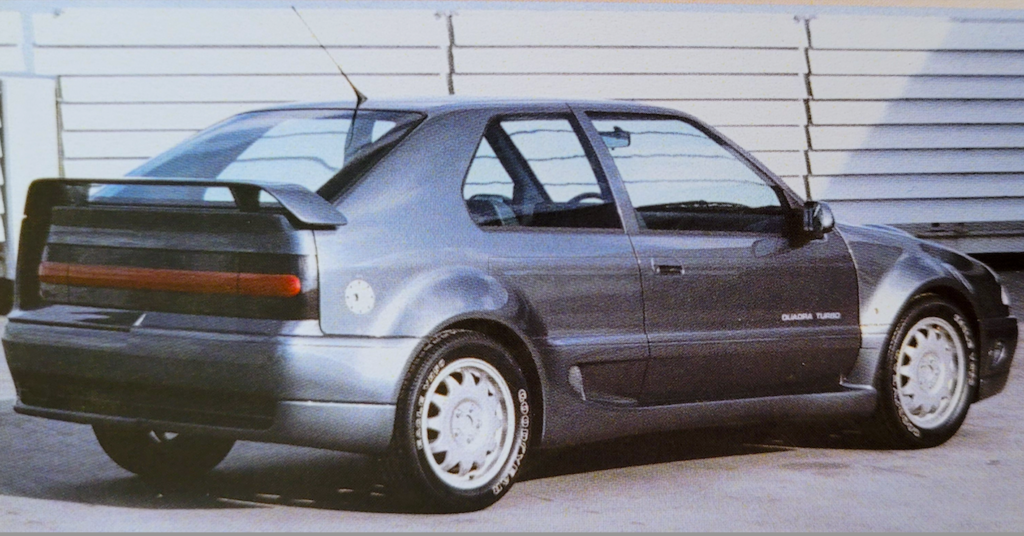
The X05 project, launched on paper in mid-1985, really took shape in 1986. Grégory remembers that in the Rueil design office, the Renault 25 renewal programme was starting (project X54, which would become the Safrane in 1992) ‘’and there were a lot of other projects going on. The Safrane project was won by Nagashima. For my part, I was dedicated to the X05 project and I received the first reference plan at the end of 1986.For this programme, we started with a plaster model of the first silhouette, the five-door saloon, which offered the passenger side as a three-door variant”.
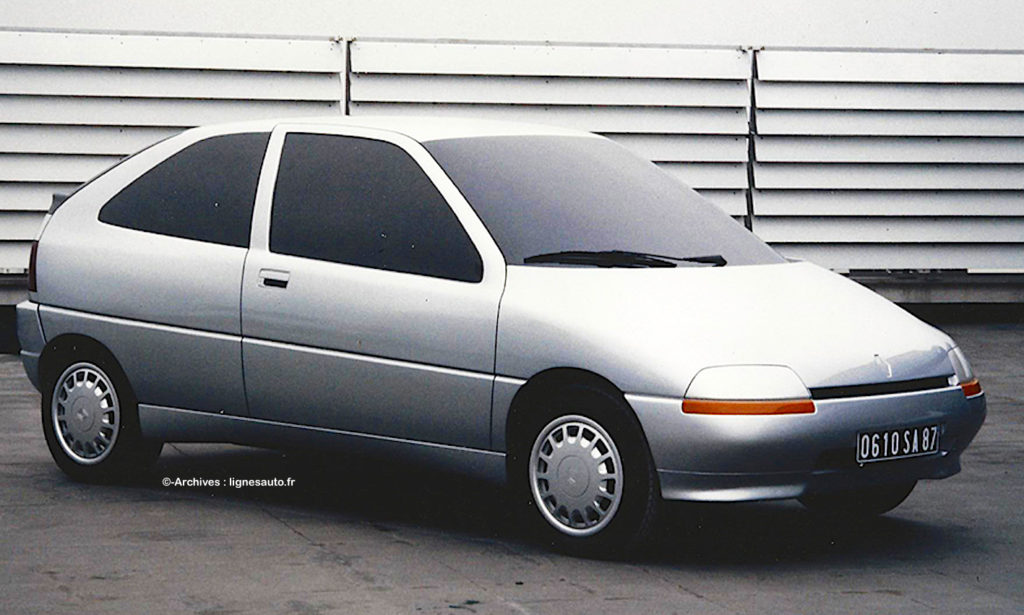
“The idea behind the specification was to design three different vehicles on a common platform: a three- and five-door saloon, a five-door MPV, and a van with an original design, ten years ahead of the Kangoo. The front doors of the saloon were identical to those of the MPV and the van. The roof was similar on the 3-door and 5-door versions. For this programme, we started with a 1/5 scale clay model of the saloon with five doors on the driver’s side and three doors on the passenger’s side. Very quickly, once the design had been finalised, we moved on to producing a 1/1 scale model in plaster. Bernard Grigy was the appointed modeller for the programme, responsible for modelling the 1:5 and 1:1 scale models.”
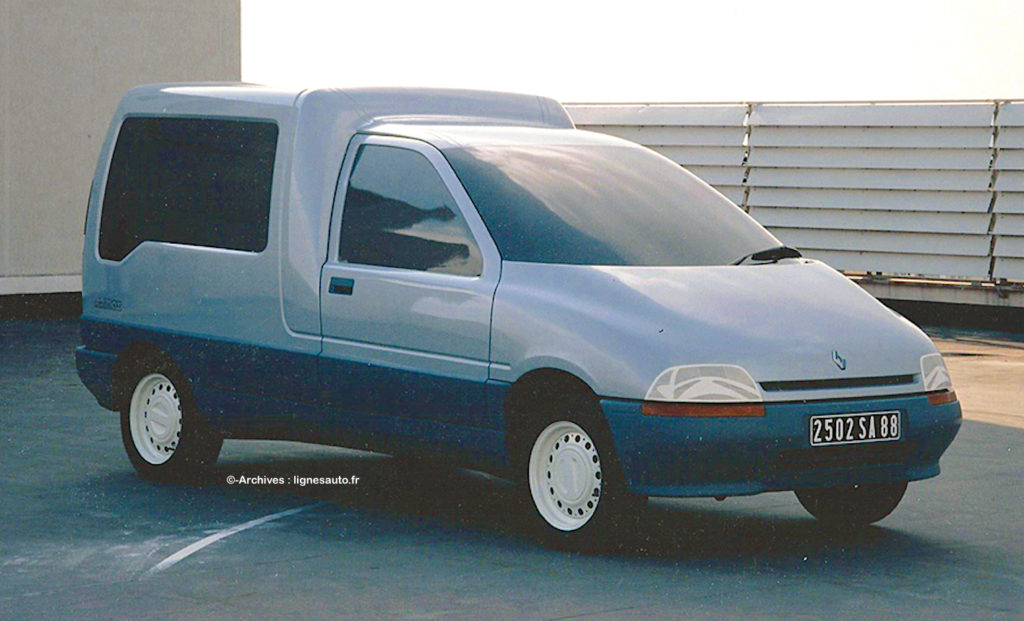
The shape of this small delivery van was innovative. At the time, the range included the robust Renault Express. With this X05, the theme of an integrated cab took root, and later led to the Kangoo concept. Archives : lignesauto.fr
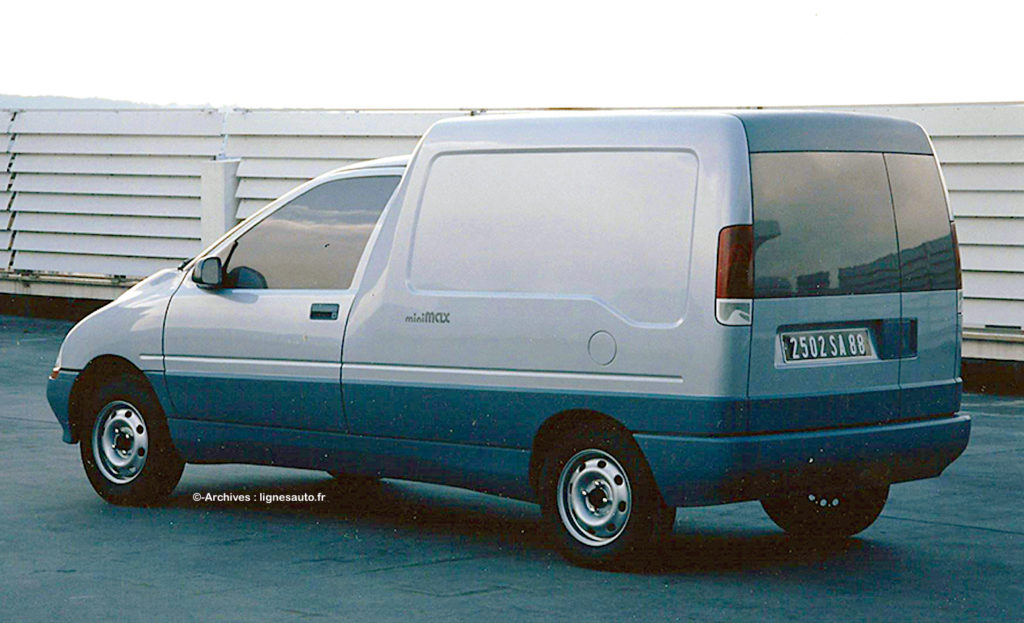
Anecdote: in 1988, Patrick le Quément used the name MiniMax on the side of the model of the X05 Fourgon project in his note to management, in which he mentioned the first two concept cars of his era: the roadster (Laguna in 1990) and the MiniMax, the future Scénic concept car in 1991. Archives : lignesauto.fr
For his saloon, Grégory Gambarara dared to create a virtually unibody concept with a bubble-shaped windscreen swept by a single windscreen wiper. The dimensions on which the entire X05 family is based are those of a saloon capable of covering the B segment as well as the compact segment. “The first 1/1 scale plaster model will be compared with the Renault Supercinq and the Peugeot 205. The avant-garde styling, with its proportions and one-piece front end, marked a clear departure from the two existing rivals. It will even be included in the selection of models for the future Clio.”
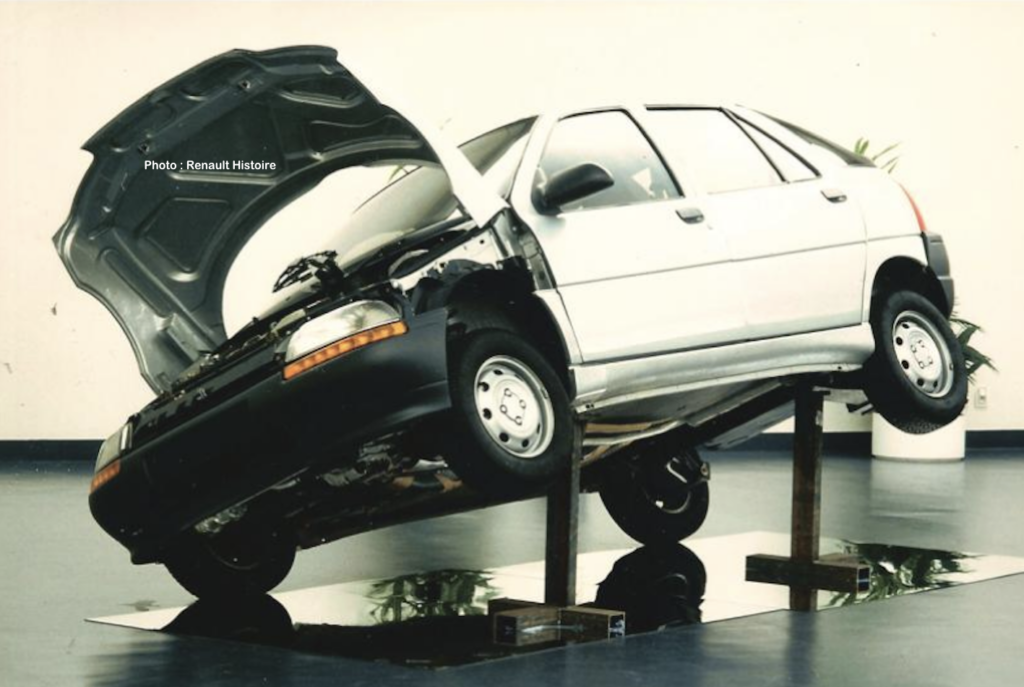
The X05 Iris programme was not just about designing a new product, but also about achieving economies of scale in design and industrialisation. Photo Renault Histoire.
Grégory Gambarara is a designer, but he does not neglect the technical or industrial aspects of his projects. He has simplified the number of bodywork parts to the extreme, as requested by the project team. The engine bonnet is autoclaved, in a single piece, and also serves as the front wings. The X05’s windscreen is bulbous, round and protrudes far forward over the one-piece bonnet. The inspiration is deliberately unibody, which was a striking innovation at the time, when the Renault Espace was not even two years old!
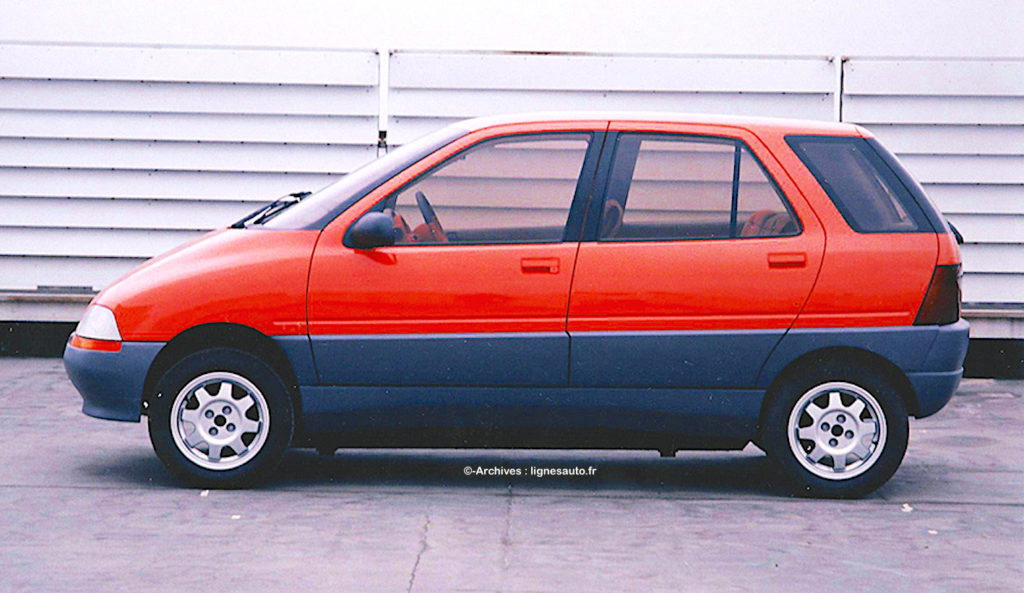
The X05 ‘Van’ – or compact MPV – had the same doors as the saloon, thanks to the raised floor. Archives : lignesauto.fr
Grégory Gambarara recalls that the 1/1 scale plaster model of the X05 saloon was made in the Rueil modelling workshop. “By contrast, the other two silhouettes – the MPV and the van – were made directly in plaster, 1:1 scale, at Studio D3, under the direction of Bernard Pene. The Van did not go beyond the 1:1 scale stage in painted plaster. The saloon and MPV were taken to the next level, with resin bodywork, polycarbonate glazing and a complete interior. These two models were made at Carrozzeria Coggiola in Turin, at least for the exterior and interior bodywork. I remember it very well, it was my first job with a major Turin coachbuilder. Coggiola had an incredible level of expertise. Coggiola’s workshop was able to make interior sheet metal parts, which gave a pretty incredible finish to the presentations.”

The plaster model of the 3 and 5-door saloon, depending on which side was being viewed. Aerodynamics were not neglected: the small rear spoiler was part of a very fluid design for its time. Archives : lignesauto.fr
Inside, the X05 is equally avant-garde. The design team for this part of the project was led by Piero Stroppa, head of interior design, and it was Alain Bublex and Michel Velay in particular who worked on the styling of this all-purpose car. Grégory, who worked alongside them on the project, remembers the work of Michel Velay, who was ‘a big fan of MPVs’ at the time. As for Alain Bublex, his ‘Helicopter’ dashboard features innovative volumes and controls on either side of the steering wheel that would have seduced Michel Harmand, the inventor of the Citroën lunette! “As for the interior, everything will be done in the Interior Design workshop in Rueil, including modelling the various elements of the interiors of the two models, instrument panels, seats, door panels, steering wheels, and so on.”
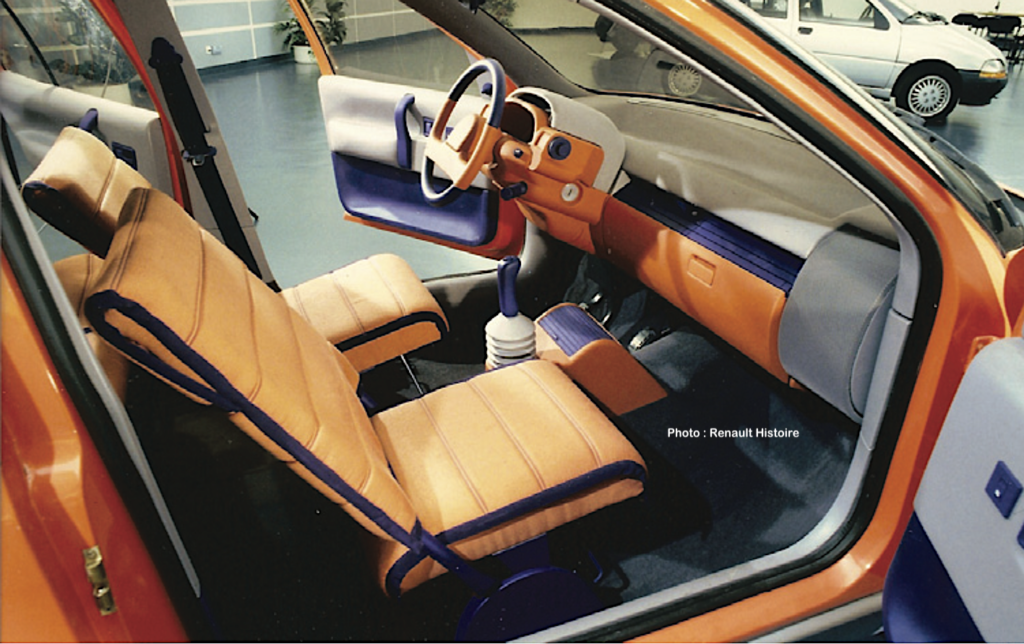
On board the X05 project, designers Alain Bublex and Michel Velay have not lacked originality and daring! Photo Renault Histoire
And as nothing is wasted at Renault, the VBG (Véhicule Bas de Gamme) programme, which has only just come to an end, has given the X05 project a taste for dazzling colours. The dashboard has three levels: a light-coloured cover, a flat surface covered in blue fabric and a huge orange glovebox. The instrument cluster is two-tiered, with the warning lights at the top and the dials in the middle, while the rotary controls are on either side. The whole is in the same three dominant colours as the dashboard.
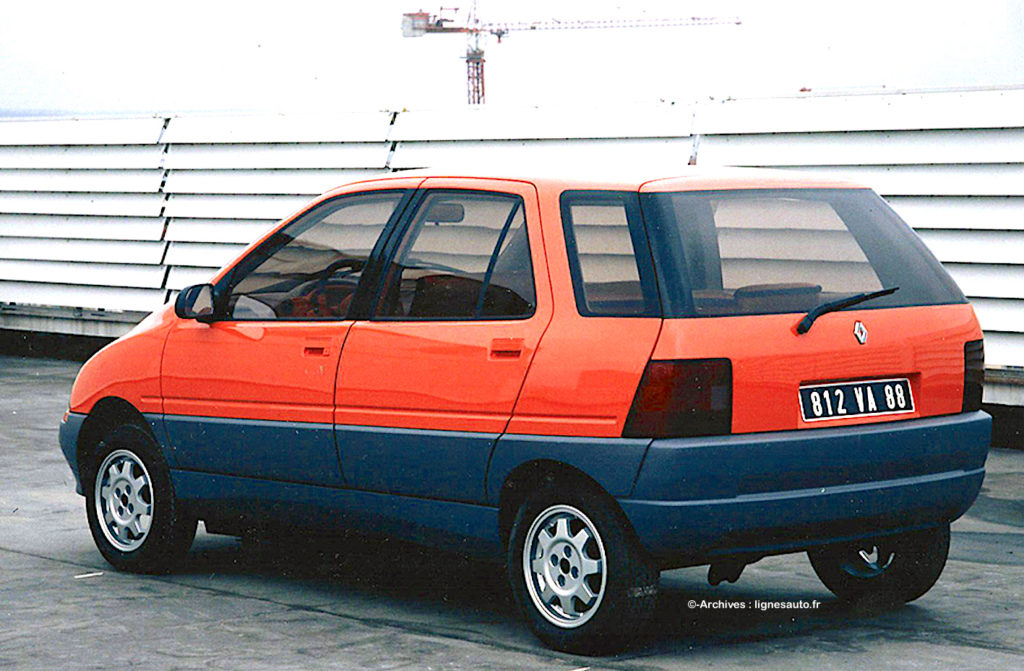
The Van seen from 3/4 rear, with its three-part rear window providing excellent rear-view visibility. Archives : lignesauto.fr
The tubular seats are covered in a kind of cover, while between them, the blue gear lever is positioned ahead of a small orange storage unit with a blue sliding flap. The inspiration of the interior designers of the time is evident, and has rubbed off in part on the Twingo. Grégory Gambarara also remembers that ‘’Michel Velay invented a seat for the “Van” (minivan) with a backrest that tilted forward, so that when the car was stationary you could sit with your back to the road and talk to the rear passengers. A concept inspired by the Renault Espace seats. Patrick le Quément discovered the project when he arrived at Design. He found the subject very interesting and followed it through to the end.”
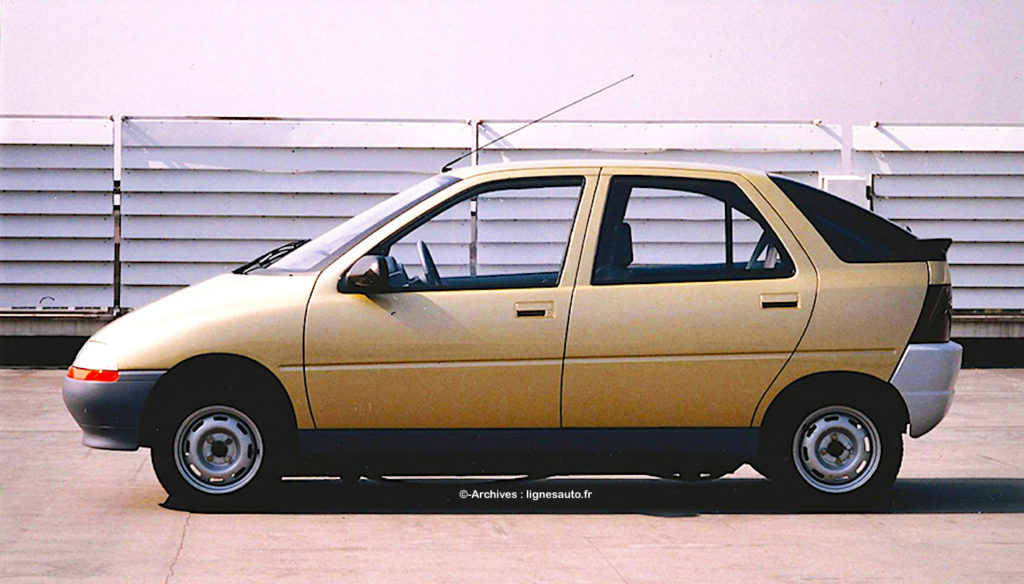
The model of the saloon, like that of the van, was produced by the Coggiola workshops in Italy. Archives : lignesauto.fr
The project will involve virtually all the engineering, styling and industrialisation stages of a real project. Four prototypes will be built for testing (‘’there would still be a driving prototype, but that remains to be seen…’’ confides Grégory), while the Iris factory, capable of producing these cars on a specific platform, will certainly not be built – this was not the original idea – but all the plans will be drawn up to quantify the advantages of such a site. In theory, according to Claude Sutren, the Iris factory was capable of producing the X05 in 9 hours 40 minutes, compared with 16 hours for the X53 (Renault 19). “The project was intended to serve as a reservoir of ideas and as a target for guiding the development of existing industrial sites.”
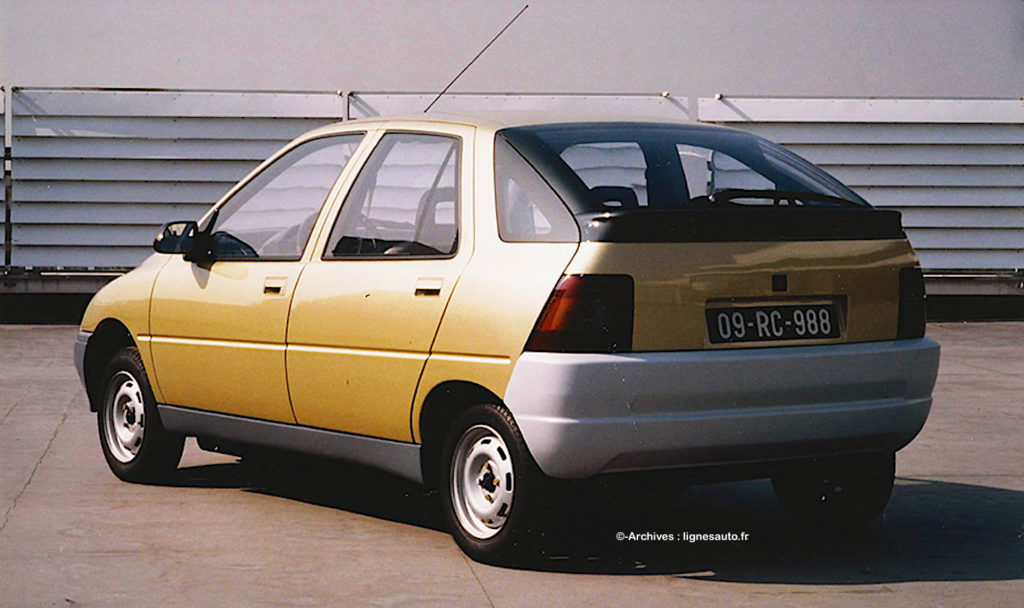
The rear quarter panel on the hatchback is highly advanced, with a 3rd window flush with the tailgate window. Archives : lignesauto.fr
And this was the case, because the industrialisation of the X57 (Clio), X54 (Safrane) and X56 (Laguna) projects, and above all the Mégane range with the Scénic (X64), directly benefited from some of the advances made in the X05 project. As for styling, it has enabled progress to be made in the acceptance of a unibody concept, in that of a compact MPV and in the simplification of the number of parts: 160 sheet metal parts compared with 257 on the Renault 19 marketed during the X05 project, and 2,200 welding points instead of 3,098 on that same Renault 19. For a better understanding of this project, we suggest you look at it in the context of all its smaller and bigger brothers studied during the same period.
*LIGNES/auto would like to thank Renault Histoire, Claude Sutren and designer Grégory Gambarara.
Become a member of the Renault History Association here: https://sites.google.com/view/associationrenaulthistoire/accueil
RENAULT DESIGN OVERHEATED BETWEEN 1985 AND 1995!
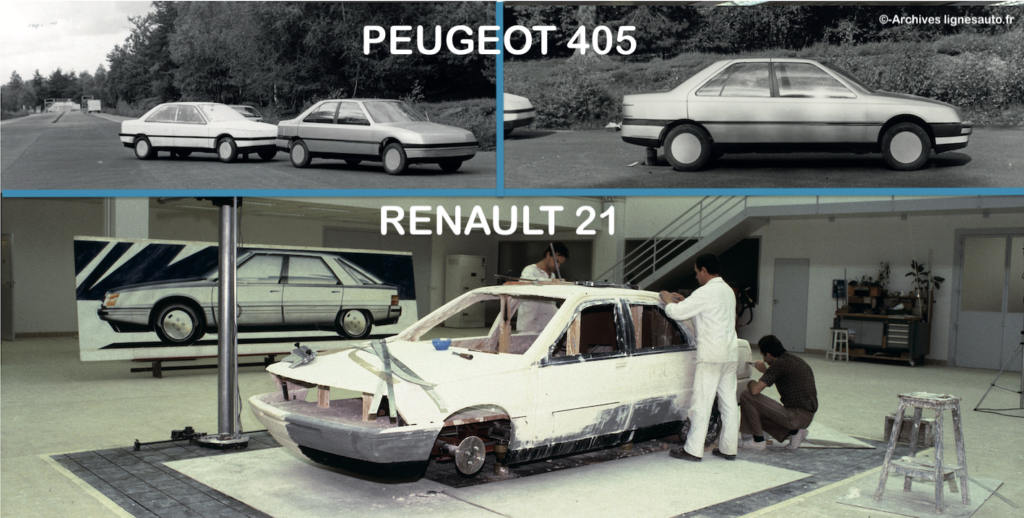
Between 1985 and 1995, while the X05 Iris project was on the drawing board, Renault design was about to experience a decade of madness! First of all, there was a change of boss with the departure of Gaston Juchet in 1987, who was immediately replaced by Patrick le Quément. Renault Style, which reported to Engineering, became Renault Industrial Design, which reported to General Management. In 1985, the Renault range was awaiting the arrival on the market of the Renault 21 (1986), designed by Giugiaro and rival to the future Peugeot 405, which arrived in 1987, above.
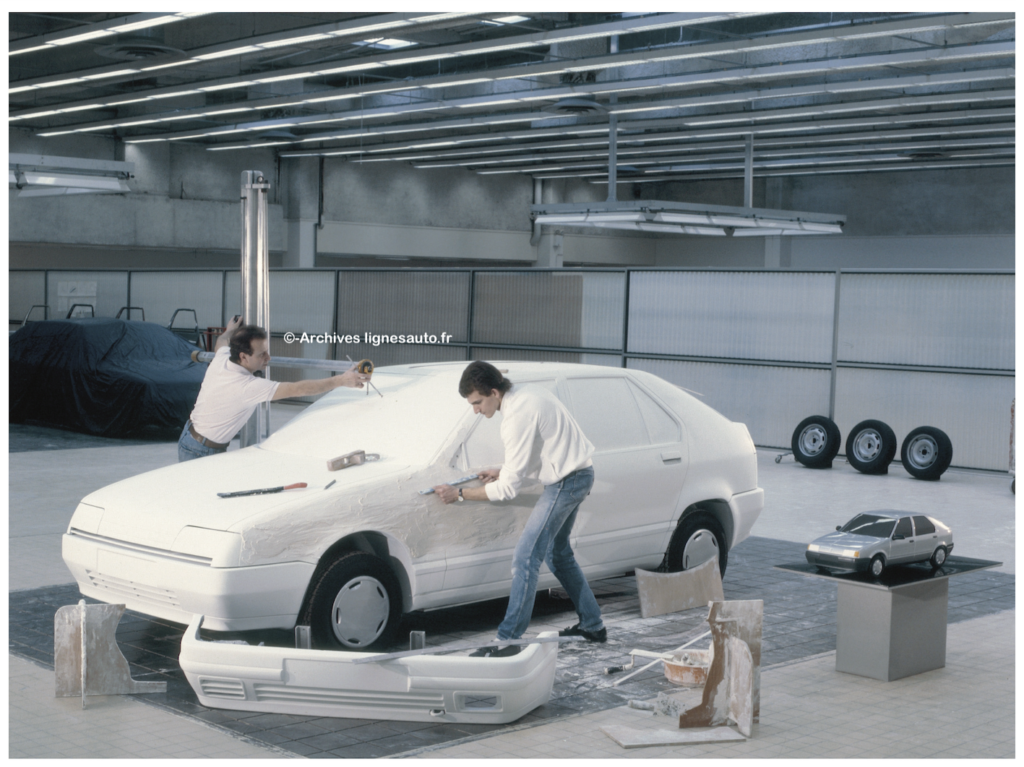
The range was also waiting for the Renault 19 (launched in 1988), which was being studied above. It too was designed by Giorgetto Giugiaro, who was to take Renault into the quality era. Like the R21, this study underwent a development in which plaster played a definite role. It may be over 36 years ago today, but back then, the Americans did everything Clay-style. Let’s close the parenthesis…
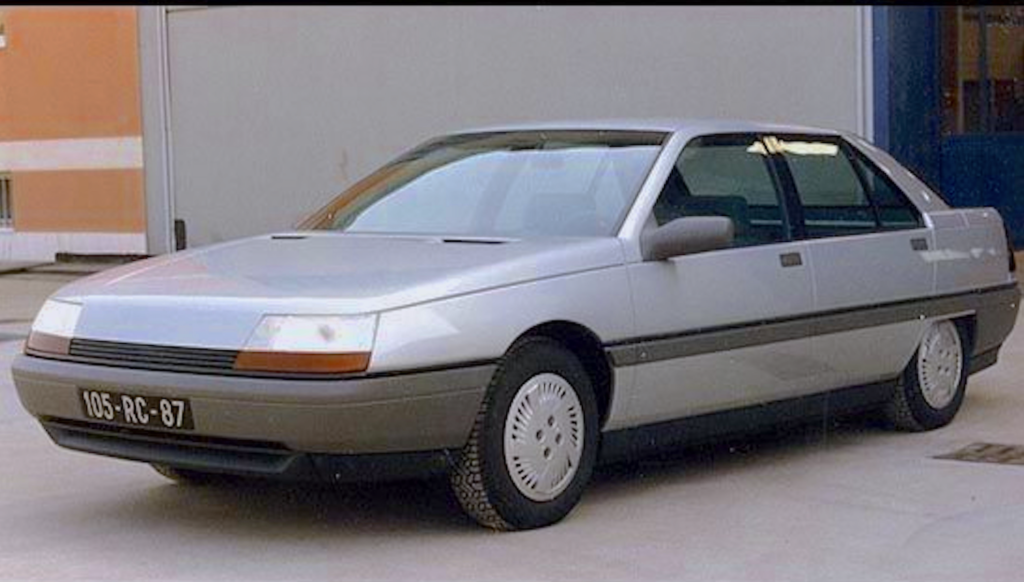
Two years after the launch of the Renault 25 designed by ‘chef’ Gaston Juchet, the renewal of the car was launched under the code name X54. In 1992, this project led to the Safrane, a top-of-the-range model which was postponed to make way for the renewal of the Supercinq by the Clio (X57 programme). Nevertheless, in 1987, models of this future great Renault were produced, as shown above.
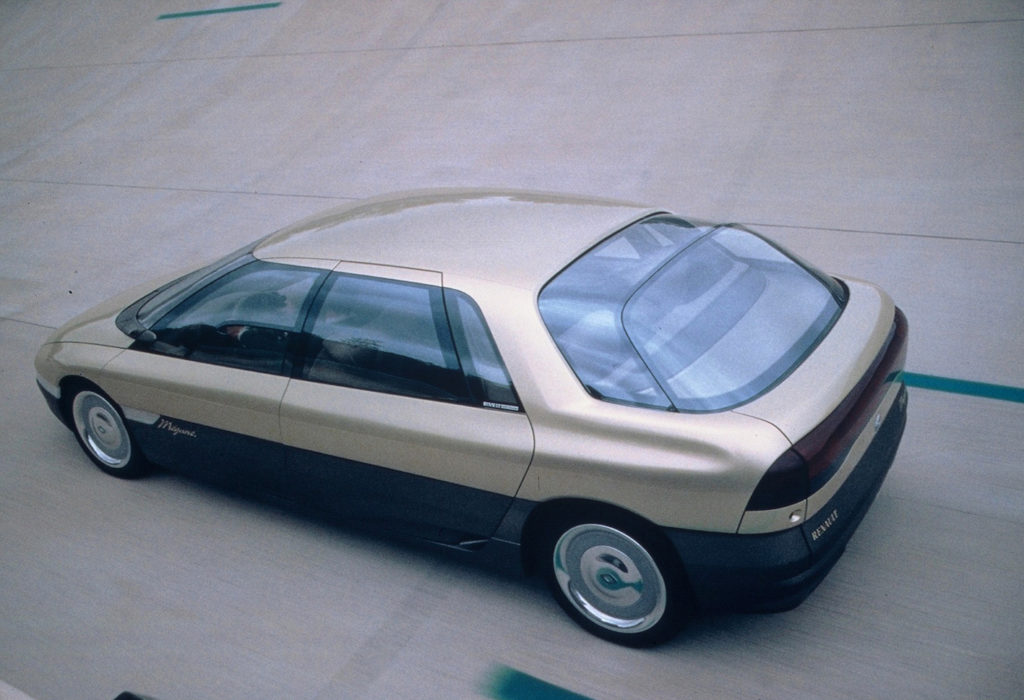
Did the 1988 Mégane concept car, unveiled at the Paris Motor Show alongside the Peugeot Oxia and Citroën Activa, have any impact on the Safrane programme? Probably not. The designer of the concept car was a certain Jean-Pierre Ploué, whereas the Safrane was designed by Joji Nagashima…

Alongside the X57 project for the first Clio, which was revealed in 1990 (above, a 1986 model), the W60 was based on the theme of a small car that was to become the Twingo, but which for the time being existed only as two scale 1 models (those of Gandini and Ploué), which were soon to be locked away in cubicles. They were exhumed from their prison by Patrick le Quément when he arrived in 1987.
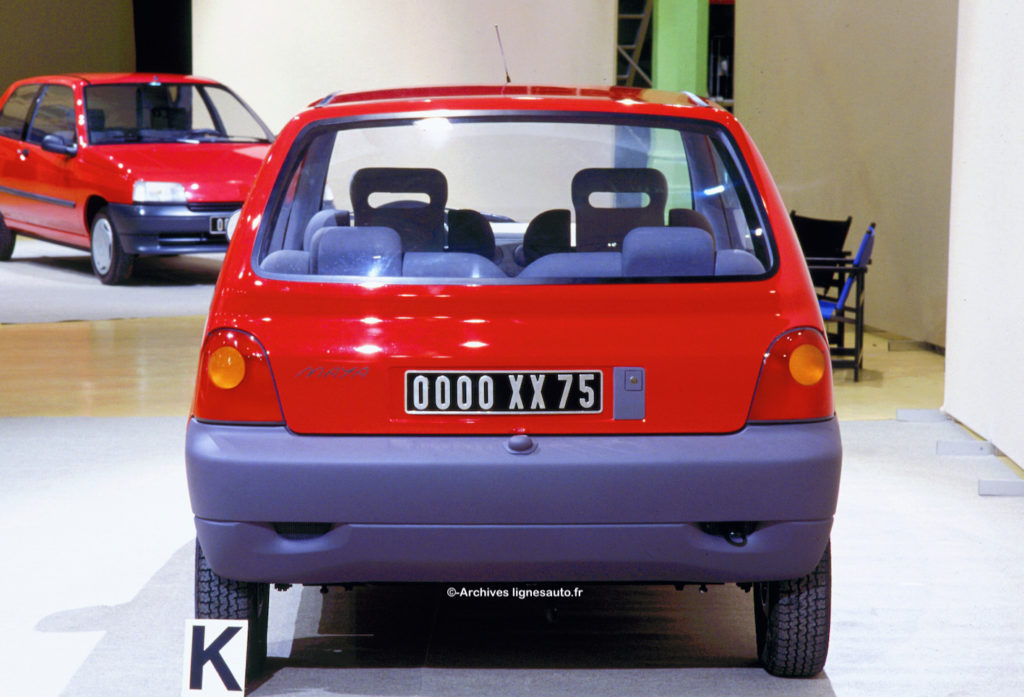
The ‘tour de force’ of Patrick le Quément, just arrived at the head of Renault design, is to push the X06 project of the future Twingo with a dimensioning that raises doubts because the Twingo is as wide as the Clio, itself still under study as we can guess above during a customer test. Isn’t it too dangerous to have two ‘small’ cars in the range? Reality will provide a scathing answer with the success of the two models. Archives : lignesauto.fr
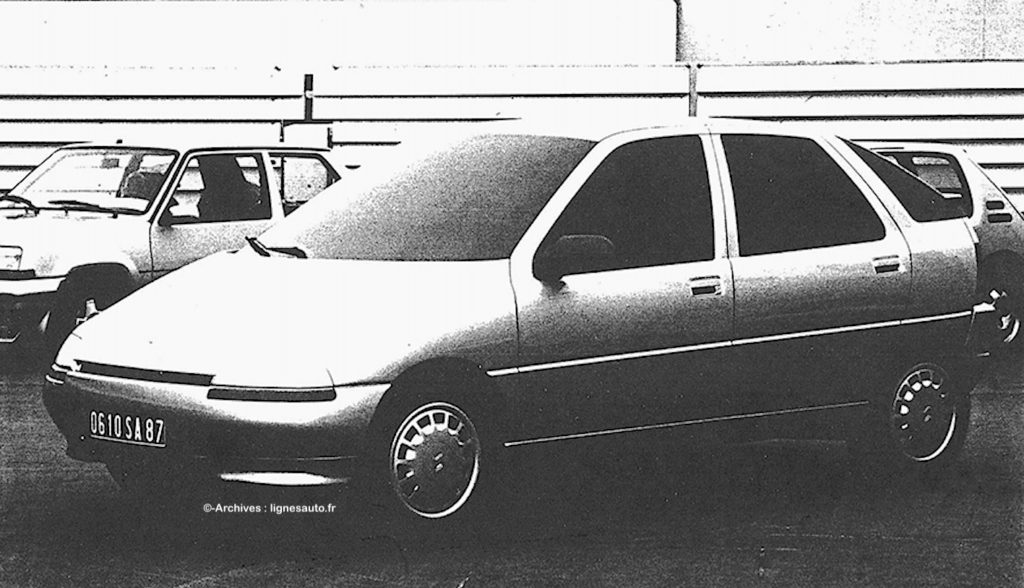
Meanwhile, in 1987, the X05 Iris project was taking shape above, and was even up against two potential rivals: the Supercinq, whose replacement (Clio) was almost finished, and the Peugeot 205, which was only 4 years old at the time. Archives : lignesauto.fr
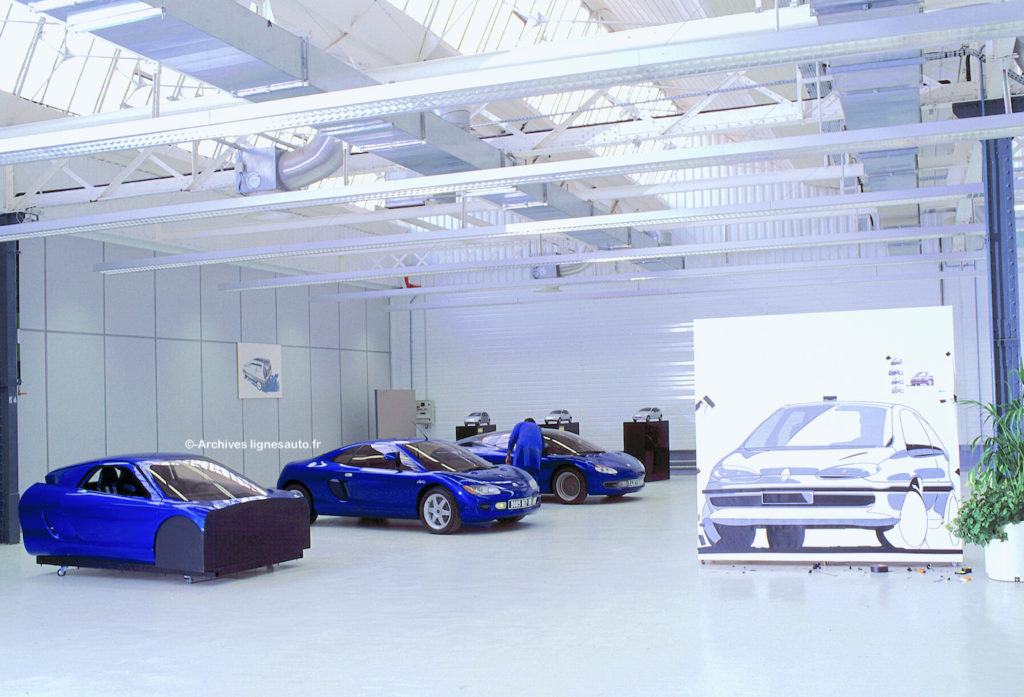
Not everything was rosy for Renault design, however. The programme for an Alpine Berlinette was launched in 1989, giving rise to two models and a running prototype. This project was carried out in-house alongside the X64 project for the Mégane (1995), a sketch of which can be seen in the workshop. But it was not to be followed up, despite two superb proposals, from Christophe Dupont in the foreground and Guy Greffier in the background. Archives : lignesauto.fr
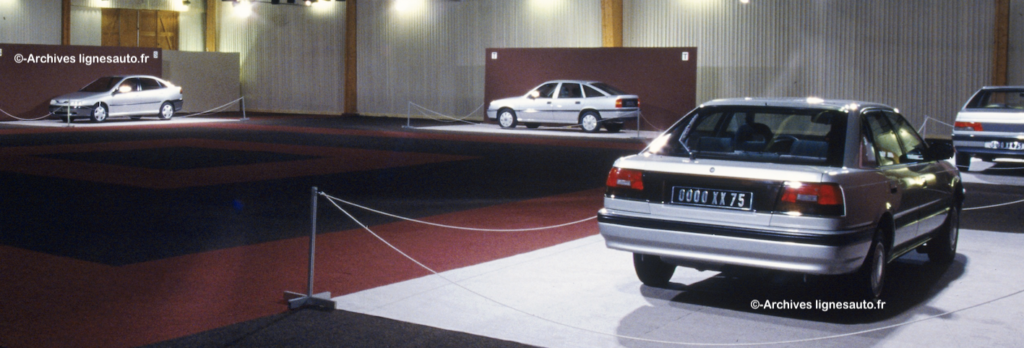
While the Clio was designed under Gaston Juchet, the Twingo and Laguna were taken in hand by Patrick le Quément when he arrived. The X56 project for the Laguna even existed in a three-box version (but with a hatchback!), as can be seen in this photo taken during a customer test. The Renault saloon, which competed with the 406, arrived on the market in 1993, two years before its Peugeot rival. Archives : lignesauto.fr
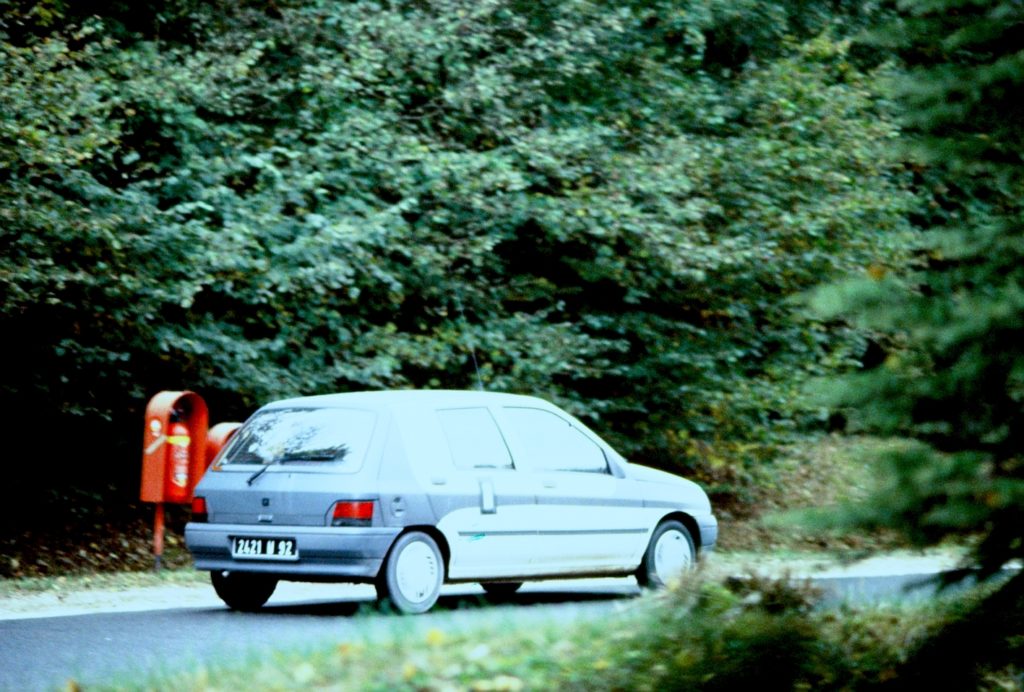
The 1990 Renault Clio was ready long before it went on sale. As was often the case in those years, l’auto-journal trapped a development prototype. Both the Clio and the 1992 Safrane were models designed during the Gaston Juchet era, but logically unveiled at the start of the Patrick le Quément era.

In 1990, Renault began work on the W67 project. It was a long, very low saloon-coupe with two wide gullwing doors, designed by Jean-Pierre Ploué. The lines were reminiscent of the supple front end inspired by the Megane (1988) and Laguna (1990) concept cars, both created by the French designer. At Matra, a ‘wireframe’ mock-up gives a clear idea of the exceptional interior space of this saloon, which has a very modern coupé-break shape, with a very generous glazed area. This architecture had already been used by Renault in the mid-1970s with Robert Broyer’s R14 coupé. The Renault-Matra W67 was intended to be at the top end of the range. Two years after this project, the Renault Safrane arrived on the market with a new logo, and this W67 could have accompanied it with an innovative concept. Archives : lignesauto.fr
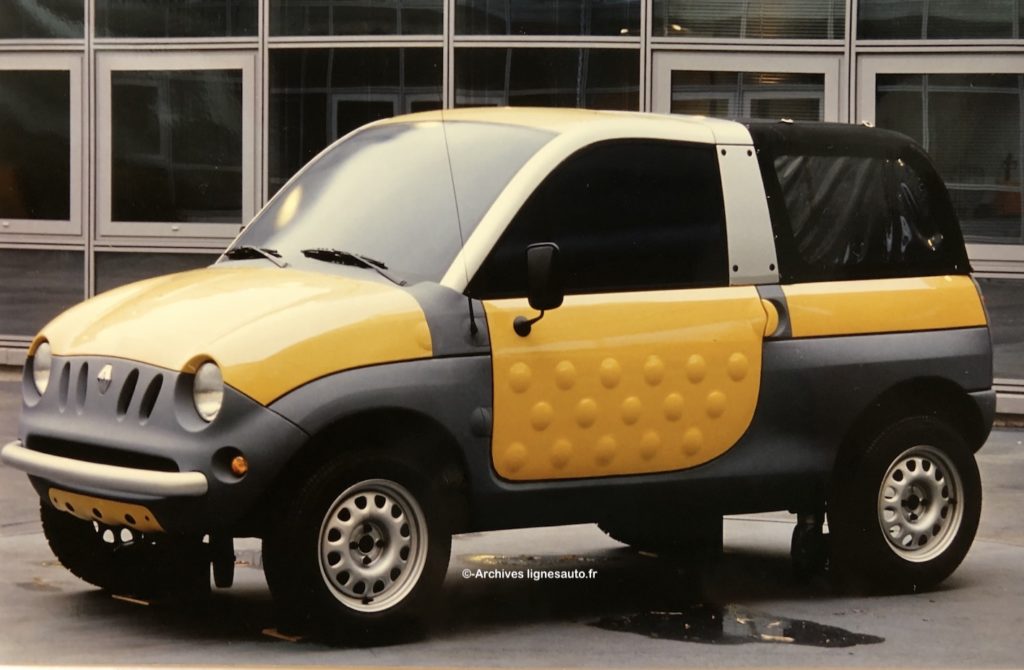
In 1993, just as Twingo was coming onto the market, the W78 project came to life. This was an extra-urban, ultra-economical car. This project, requested by the product management, aimed to offer the range an economical, lightweight 4×2 and 4×4 vehicle. In spirit, it was a modern synthesis of the rural performance of the R4 and what should have been the Citroën Mehari. The project was led by Yves Legal, with Anne Asensio in charge of exterior design. Archives : lignesauto.fr
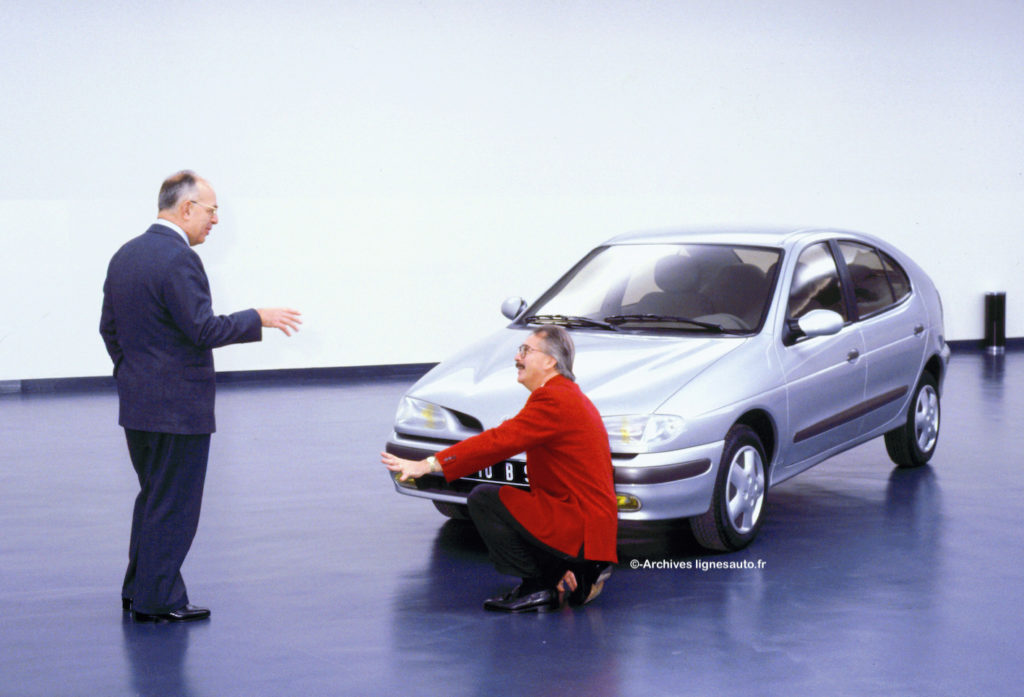
After the Twingo in 1993 and the Laguna in 1994, the teams led by Patrick le Quément worked on the compact car at the heart of the range: the replacement for Giugiaro’s R19. Renault’s design entered an elliptical era with this drawing by Hermidas Attabeki, and the Mégane (1995) gave birth to six different silhouettes: 5-door saloon, 4-door saloon with boot, coupé, cabriolet, estate and Scénic MPV. The Mégane was the first programme to benefit from reduced design times. This X64 programme is reminiscent of the X05 Iris in terms of the number of silhouettes! Patrick le Quément presented the project to Raymond Lévy, then Chairman of Renault (late 1986-1992).
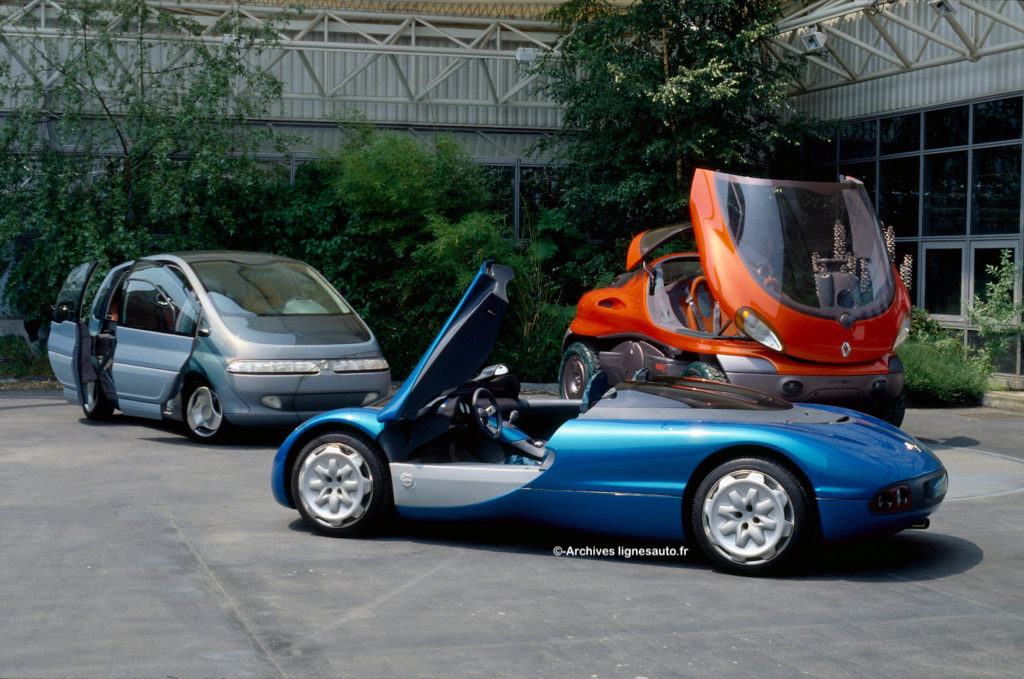
And throughout these years, Renault design has been making a name for itself with its concept cars. The Laguna roadster in 1990, the Scénic compact MPV concept in 1991 and the Racoon in 1993. The latter coincided with the development of digital design. These three models embody passion, family and escapism. In 2010, Laurens van den Acker will take up this theme with his famous ‘daisy’ of concept cars.
BONUS
Did Gandini inspire the X05 Iris programme?
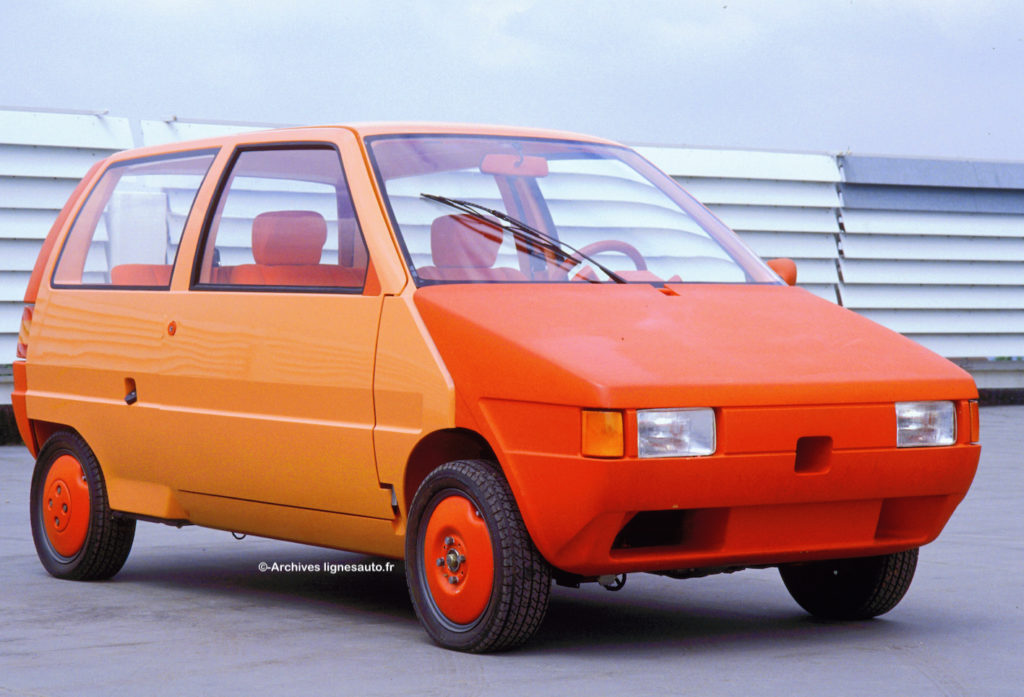
In 1984, a year before the launch of the Iris project, Marcello Gandini arrived at the Renault design offices in Rueil with his Piccola small car project. He assembled the vehicle in less than an hour from parts stored in a crate, using an innovative and simple design. Gaston Juchet – then head of styling – and the members of the management team present that day were not only stunned, but frightened…
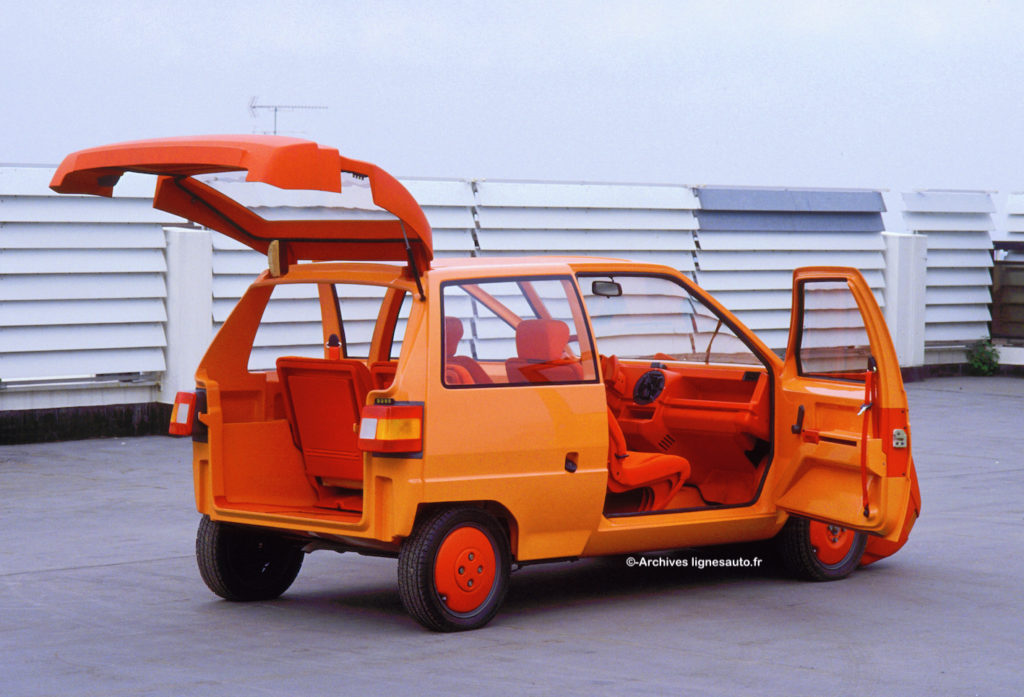
If Gandini’s plan went ahead, it would mean razing the plants to the ground in the way they had been designed at the time. Obviously, with the Régie still making huge losses and the unions in an uproar, there was no question of going ahead with the project. However, there was no question of this ingenious little car falling into the hands of the competition. Marcello Gandini was paid a fair price for his work, and the model, which now belonged to Renault, was kept safe and out of the way. That was the end of the story. Except that a year later his shadow loomed over the X05 project!

